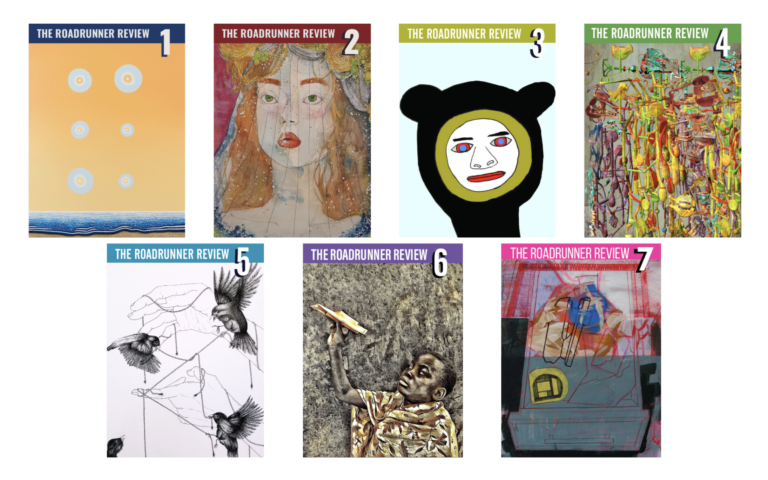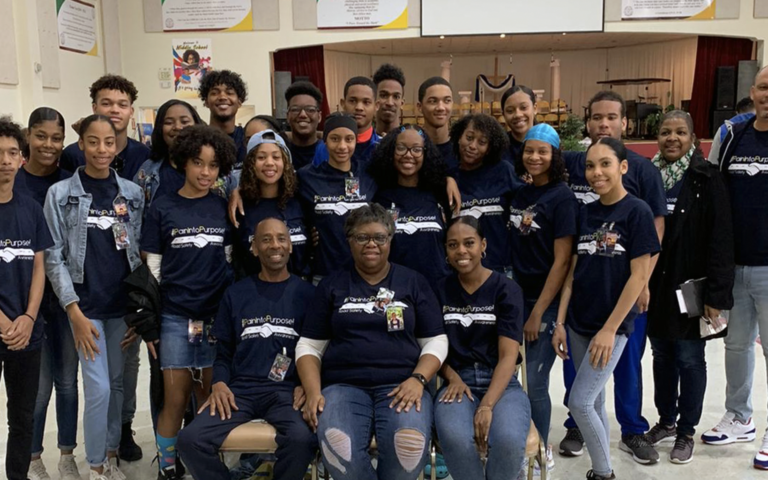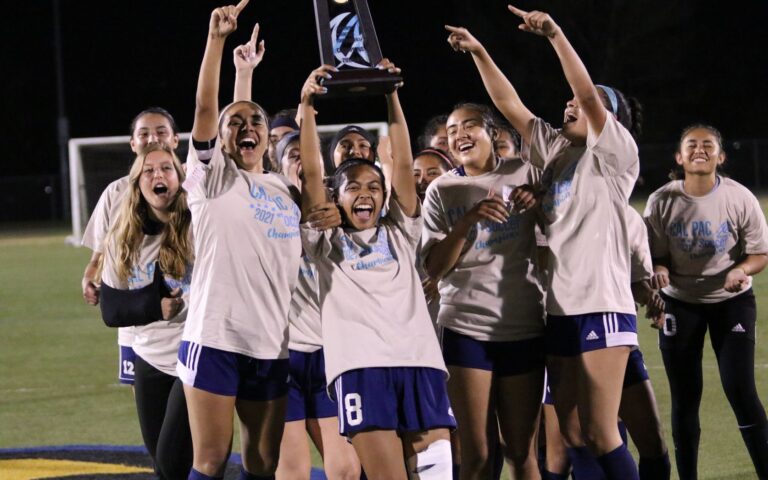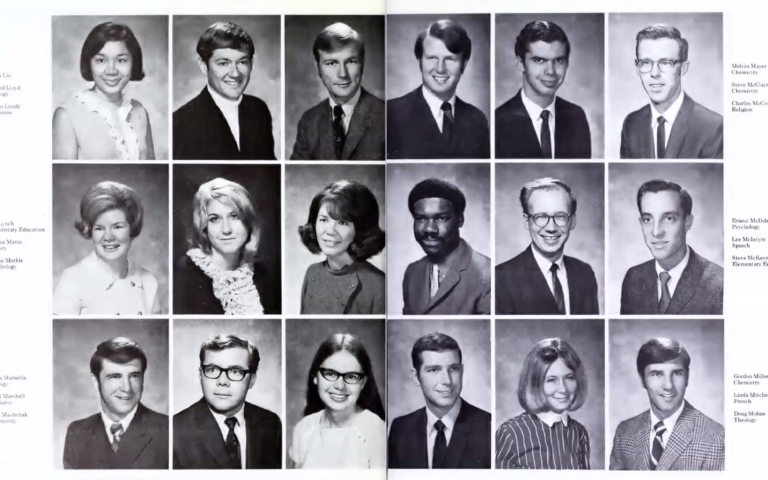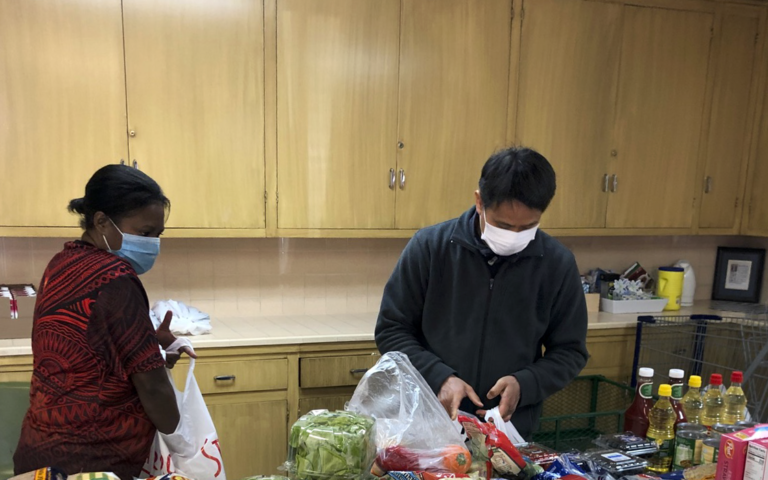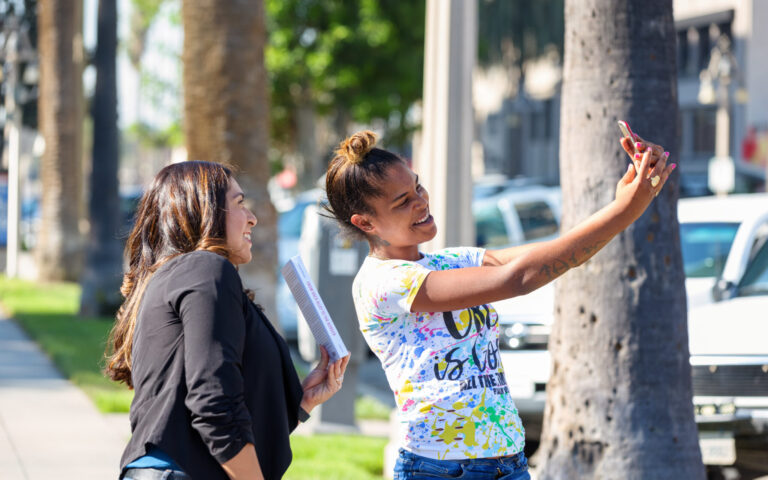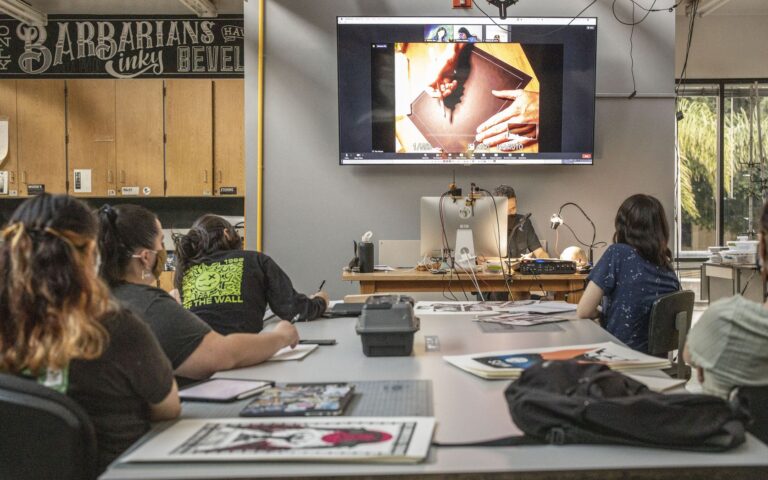By Natalie Romero
The stack of faded copies of Musings sat in the corner of Sari Fordham’s office in Humanities Hall. It had been years since the Department of English had produced a literary journal—years since the culture of journals had started to shift and change to a more open and inclusive online world.
Sari, professor of creative writing at La Sierra University, wanted to change that. “They kept whispering to me about possibilities,” she says of the Musings copies. The old, maroon-colored folios seemed to urge her to think bigger, even as they were becoming covered in thin layers of dust.
What would it look like to produce a modern international journal that features young writers who are not traditionally part of literary conversations? Sari knew that it would need to be digital in order to have a wide readership and that it would be open to student writers everywhere, not just La Sierra’s scholars. Could such a thing be created on campus, by students, for students?
Ultimately, the answer was yes.
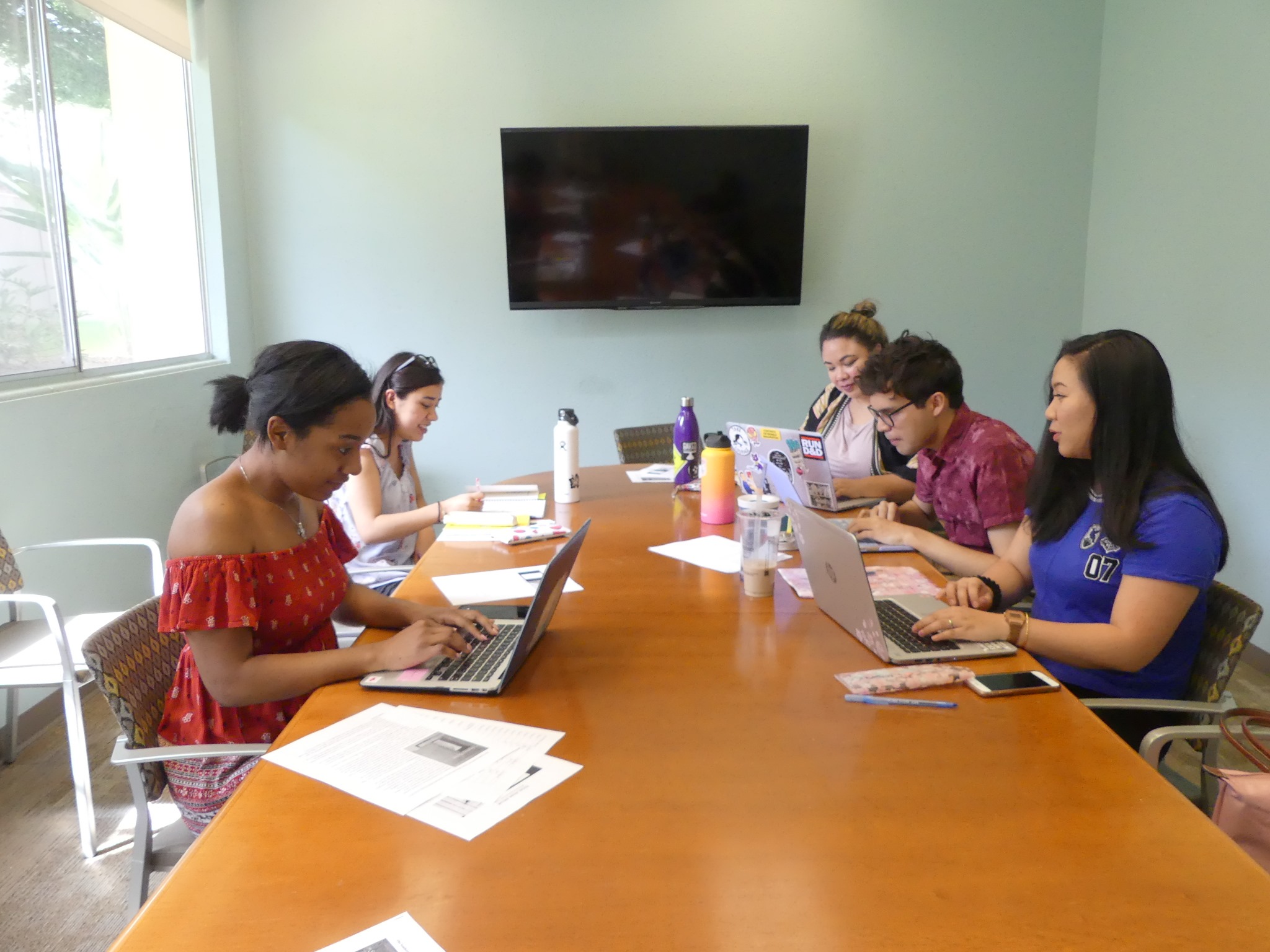
Five of the eight student editors for the second issue of The Roadrunner Review work together in the conference room of Humanities Hall.
Did you know?
- The Roadrunner Review is published three times a year, during La Sierra’s spring, summer, and winter quarters.
- Pieces that are awarded the yearly prizes for fiction, nonfiction, and poetry are published in the spring issue and the authors receive $100 each. Winners of the yearly high school writing contest are published in the summer issue and are also awarded $100.
- The upcoming issue will be released on June 20, 2021 at roadrunner.lasierra.edu/.
- Musings was published by the Department of English and Communication and was primarily run by students. A large part of the Musings culture was a monthly gathering called Music, Muse, and Mocha. An issue of the Criterion from 1999 described the event as allowing “students, faculty, staff and visitors to present their original poetry, songs, stories, and even artwork.” Much of the original work presented at “3M” was published in Musings, but over the years interest dwindled. “Some years, the editor worked hard, assembled a team to deal with submissions, etc. Some years, a student would undertake the responsibility and do nothing. So the slide began into oblivion,” describes Dr. Winona Howe, former chair of the department and professor emeritus.
“The Roadrunner Review grew out of a lot of conversations on campus as well as with our first team of student editors who helped shape the journal’s character and scope,” Sari explains of the journal’s creation in 2019. With input from her fellow faculty members, Sari wrote the framework for a brand-new two-unit course called Literary Editing and Publishing, designed specifically to house the fledgling journal. Students can take the course up to three times (earning a total of six units), mastering a set of skills ranging from copy editing and literary evaluation to social media promotion and blog post creation.
“Most of these skills will be transferable to a future workplace, which is something I take seriously,” Sari says. Students don’t have to be English majors in order to be an editor for the journal, and all students who complete the class have a direct hand in creating something of significance. “They are now part of the conversation,” she continues.
Holly Hayton Rittenhouse ‘19 was an editor for the first two issues of the journal before graduating with degrees in both English and Spanish. She describes being part of The Roadrunner Review as one of the most rewarding things during her time in the English department. “Not only did it teach me valuable industry skills for the literary world, I was able to publish and encourage passionate student writers around the world while being a passionate student writer myself,” she says.
Some students stay on even past their six-unit experience, becoming senior editors with more responsibilities. This was the case with J. Ethan Hoffman, ‘20, who joined the team as they were producing its second issue. “My experience working for The Roadrunner Review was one of the most satisfying things to come from my time at La Sierra University,” he shares. “I loved [it] so much that I stayed on until my last quarter.”
As he read through hundreds of submissions to the journal, Ethan found himself immersed in more than just the process of evaluation. “[I spent] my nights inside worlds intimately created by my peers around the world. The beauty, the tenderness, the strength. Now, I understand the power of vulnerability and passion to unite. Everyone offers such a unique and valuable viewpoint to the Roadrunner,” he says. “It’s so thrilling to create something that represents us all.”
What if no one sends in anything?
The question hung heavy over the heads of the first group of student editors. Under Sari’s guidance as editor-in-chief, they had worked hard on creating a website for the yet-to-be-published journal. They had put out a call for submissions, but as a new and unknown entity in the world of online journal publishing, they didn’t know what to expect.
The apprehensions kept piling up. Would their new project even get off the ground?
“And then, we received ‘Greydogs’,” Sari recalls, “and I knew we were going to have not only a literary journal, but a good one.”
The contemplative fiction piece by Bermudian writer Travis Chambray, which focuses on a man’s relationship with his father and then later with his daughter through the lens of fishing trips, won the inaugural Roadrunner Fiction Prize and was nominated for a 2019 Best of the Net Award and a 2020 Pushcart Prize.
During that first submission window, handfuls turned quickly into hundreds. Now, each submission window sees between 100 and 300 pieces of fiction, nonfiction, and poetry. But as with any literary journal, the selection process is competitive and The Roadrunner Review only publishes about 20 pieces per issue.

Michael Akuchie recently published the micro-chap book “Calling out Grief” from Ghost City Press.
While it can be hard to turn away excellent prose and verse, Sari says the experience is helpful for the editors, many of whom also enjoy writing. “Rejection is a natural part of the publishing process and not a valuative statement,” she explains. “I say this in class, but the lesson is so much more tangible when you have to turn down a wonderful poem or story.”
For each stack of stories that doesn’t make it to the publication round, there is one piece that is accepted that stands out. When editors read Michael Akuchie’s poem “Hemorrhage” from his submission of three pieces, they knew it was something special. Akuchie, an Igbo-Esan born student currently studying English and Literature at the University of Benin in Nigeria, wasn’t so sure. “I thought it was barely tolerable to read,” he says of the work he submitted. The editorial team and guest judges thought otherwise, and awarded him the 2020 Roadrunner Poetry Prize.
Sari recalls how she was impressed by his verse. “I alerted our student editors [as soon as I read Michael’s poems] and asked them to vote immediately because I was terrified another literary journal would snatch them up before we could choose one and send an acceptance!”
“Being announced the winner of a terrific prize and appearing in one of the most supportive magazines because of [that] poem…has led me to reconsider several things, prominent of all is my stance on the art I make and why I should water my work with more hope,” writes Akuchie. “I am eternally thankful to The Roadrunner Review for this subtle wake-up call.”

Emily Huso attended La Sierra University from 2013 to the beginning of 2015 before transferring to Walla Walla University. Post-MFA, she is applying to college teaching positions.
Other writers who have been published in the journal sing similar praises. Emily Huso, who recently completed her Master of Fine Arts in Creative Writing from the University of Washington, sent in a nonfiction piece titled “How to Catch a Butterfly” which was selected for inclusion in the journal’s third issue.
“I loved my experience publishing at The Roadrunner Review—everything from acceptance to post-publication,” Huso says. “I appreciated how professional the communications were when I found out my piece had been accepted, what a beautiful online home the piece was given alongside so many other exquisite works, and how the journal promoted and supported my writing through social media and nominations for prizes.”
Two years, seven issues, and more than 130 published pieces later, one of the best parts of the process for Sari is simple: sending a finished product out into the world. With each issue, more young writers are being promoted—some experiencing their very first publication. “It’s an honor to be part of their journeys,” Sari emphasizes.
And people are noticing. The Roadrunner Review is a member of the Community of Literary and Magazine Presses (CLMP), multiple published pieces have been selected as finalists by industry prizes such as Best Microfiction and Best of the Net, and most recently the journal was selected for participation in the PEN America World Voices Festival.
“It’s really the absolute biggest thing that’s happened for us,” explains Sari of the journal’s inclusion. PEN America, a writing organization founded in 1922 by a group including Wila Cather and Robert Frost, describes itself as “standing at the intersection of literature and human rights to protect free expression…we champion the freedom to write, recognizing the power of the word to transform the world.” The 2021 PEN World Voices Festival featured an Indie Lit Fair designed to virtually showcase a variety of independent magazines, journals, and books that embodied the festival’s theme of ‘Power to the People.’
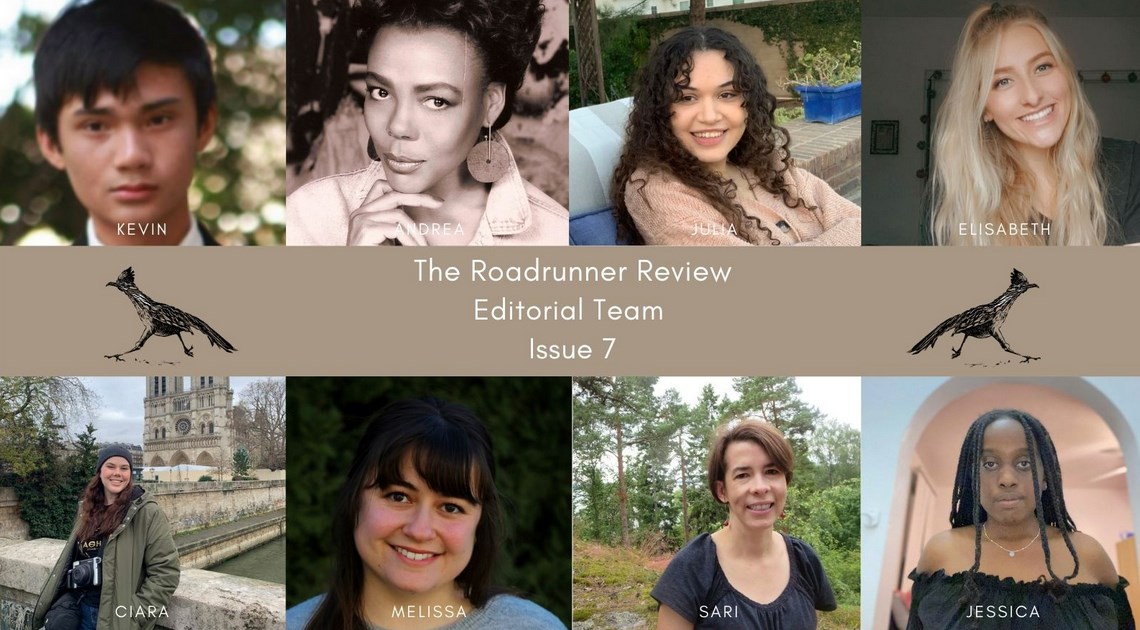
Sari and her current group of editors were ecstatic. “I know we were selected because we consciously promote the voices of younger writers and writers from all over the world,” she says.
With the eighth issue ready for release, Sari points out that the experience has been rewarding for her because she gets to witness students not only reading and responding to submissions but championing the voices of others. “They know that The Roadrunner Review is a platform,” she says.
For now, the old copies of Musings stay quiet, content to remain in the shadow of the project they inspired—one that helps pull back the curtains, making the writing arena more inclusive, supportive, and powerful. After all, Sari says, “as we wrote on our application [to PEN America], there is no power if young people are not being heard.”

